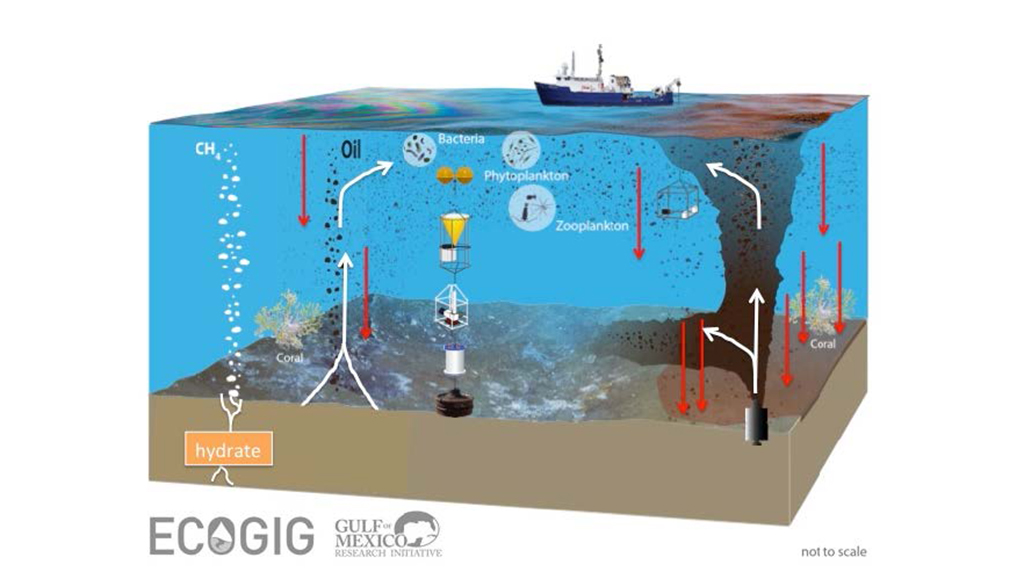The ECOGIG-2 (Ecosystem Impacts of Oil and Gas Inputs to the Gulf) research consortium brings together 29 oceanographers, marine biologists and biogeochemists from 15 research institutions.
Our research goals are to:
Measure the impacts, fates and dynamics of natural hydrocarbon (oil & gas) inputs, and of human caused discharges such as deepwater oil & gas releases
AND
Evaluate specific biological responses and adaptations to hydrocarbon exposure and to disturbances, both natural and human caused.
ECOGIG’s integrated multidisciplinary research program will employ cutting-edge technologies extending from space to the seafloor to address four broad research areas (to learn more about our different research themes and how they fit into the four broad research areas of ECOGIG, please visit the links in the research theme sidebar):
1. Clarify the biogeochemical dynamics, processes, and ecosystem impacts of natural hydrocarbon seepage in the Gulf of Mexico ecosystem.
2. Measure how hydrocarbons are incorporated into marine oil snow and evaluate its formation, dynamics and fate in the Gulf of Mexico.
3. Determine the impact of natural disturbances on hydrocarbon release.
4. Measure the biological impacts of human caused disturbances (hydrocarbon discharges and dispersant application).
Our team is working at scales ranging from molecules to ecosystems. We employ satellites, airborne platforms, autonomous vehicles in the water, deep-sea moorings, in situ cameras, towed optical systems, ROVs, underwater gliders and state-of-the-art in situ instruments developed by our team to attain a holistic and unprecedented understanding of the linkages between hydrocarbon changes, processing, fate, and impact in the Gulf environment. To learn more about the technology used by our team, visit our tools & technology section.


















 back to top
back to top